
views
X
Trustworthy Source
United States Environmental Protection Agency
Independent U.S. government agency responsible for promoting safe environmental practices
Go to source
In some states, idling for long periods is illegal and could result in a fine.[2]
X
Research source
Idling with an Automatic Transmission
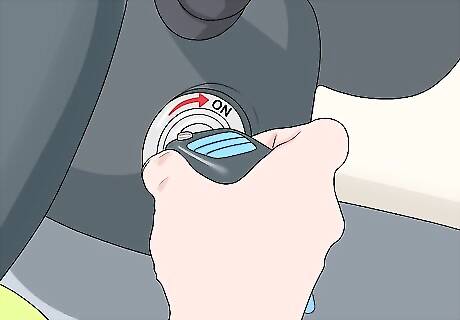
Turn on the car. On the right side of the steering column of most cars, you’ll find the ignition slot for the key. Insert your key into the ignition and turn it halfway to turn on the car’s power. After that, continue to twist the key until you hear the engine start, then release the key. Avoid holding the key in the engine starting position once the car is started. Continuing to hold the ignition in the starting position after the car is started can damage the engine. Some car models may have a different engine ignition sequence. New cars often have a push-button starter, where you only have to hold down the brake pedal and press a button to start the car.
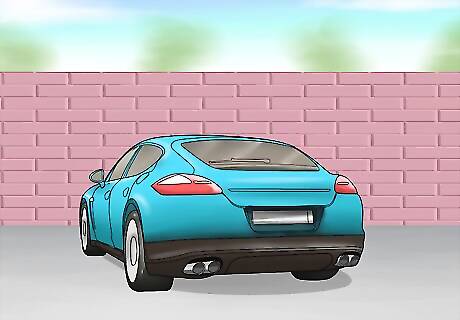
Bring the car to a stop or keep it in park. If your car is in motion, apply gently increasing pressure to the brake pedal to slow the car until it comes to a stop. If the car is in park, you won’t need to do anything special. As the car runs while stationary, the engine will idle. If your car was in motion, after it has been brought to a stop you can put it in park so you don’t have to keep holding down the brake pedal. In high traffic situations, do not put the car in park after coming to a stop. Instead, keep the brake pedal pressed down fully and your car will idle.
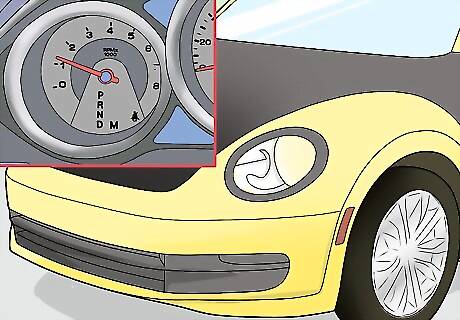
Allow the engine to continue running. If you’re starting your car cold, it’ll need some time for the engine to reach its normal idling temperature. Warmup times will depend on your car model, but if you watch the RPM gauge, after the car cycles through a period of high RPMs, it should be warmed up.
Idling with a Manual Transmission

Check the parking brake before starting the car. Manual transmission cars are usually parked in neutral with the parking brake engaged. Depending on your model of car, the position of the parking brake may vary, though you can often find it on the center console.
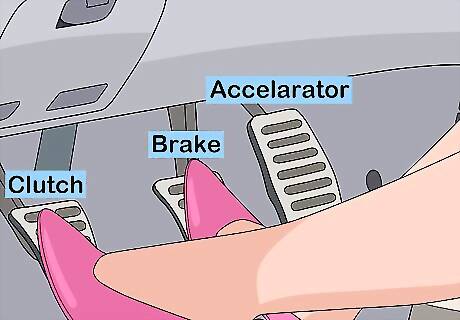
Press down the clutch while applying light pressure to the brake. There are three pedals below the steering column in manual transmission cars. From right to left, these pedals operate the accelerator, the brake, and the clutch. Make sure the clutch is pressed all the way down with your foot as you use your other foot to apply gentle pressure to the brake.

Twist the key in the ignition to start the car. Locate the ignition on the right side of the steering column and insert your key. While continuing to hold down the clutch and brake with your feet, turn the key halfway to supply power to the car. Continue to twist the key until you hear the car start, then release the key. Make sure you release the key as soon as you hear the engine engage. Holding the key in the engine start position once the engine is running is harmful to the engine. Once the engine is started, check that the shifter is in neutral, which is usually located on the center console. If in neutral, the shifter should be able to move left to right. After you've verified the car is in neutral, you can release the clutch. If the parking brake is engaged, you can release the brake, too.
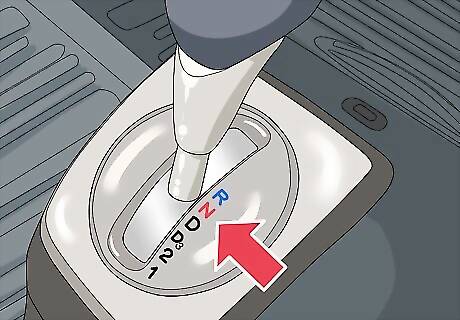
Downshift to neutral or keep the stationary car in neutral. If you’re in motion, you’ll need to press down the clutch and move the gear shifter into the neutral position with your hand. If your car is already stationary in neutral, when the engine starts the car will idle. When the car comes to a stop, you'll need to hold down the brake engage the parking brake to prevent the car from rolling.
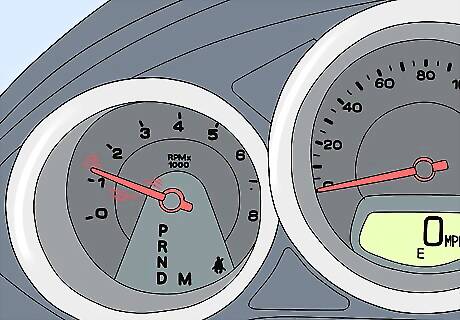
Keep the engine running while the car is stopped. It may take a few minutes before your engine heats up to normal operating temperature. You’ll know the engine is warm when you see the RPMs spike. After that, your engine should be idling warm.
Preventing Excessive Idling
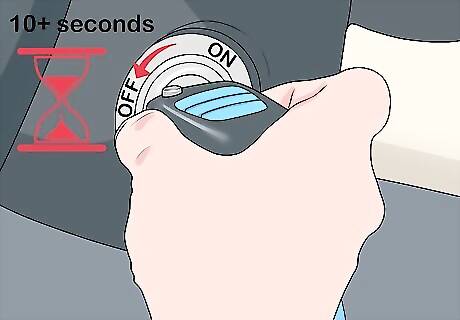
Turn the car off if you'll be idling more than 10 seconds. Though you may have heard otherwise, idling can burn more fuel than restarting your car. If you think you’ll be stopped for longer than 10 seconds, turn off your engine to save fuel. Never stop your engine in high traffic conditions, at stoplights, or in stop-and-go traffic. Doing so can dangerously reduce your reaction time.
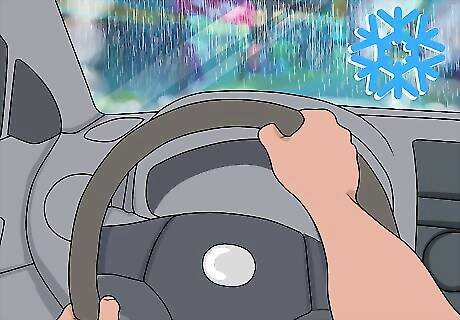
Drive your car to warm up its cabin in cold weather. Driving your car for a short while will warm it up twice as fast in cold weather as it would idling. Additionally, a short drive generally uses less fuel than it would take to warm up the engine with idling. When driving, avoid revving up your engine unnecessarily. This will cause needless fuel waste. An easy drive will warm up your car with minimal fuel usage.

Refrain from using the drive-through window at stores. Drive-through windows at establishments generally require you to wait with your car idling while the items you ordered are prepared. Instead, park your car and make your order inside the establishment to save fuel. In the event you need to use a drive-through window, you can minimize fuel consumption by turning your car off while waiting for your order.



















Comments
0 comment